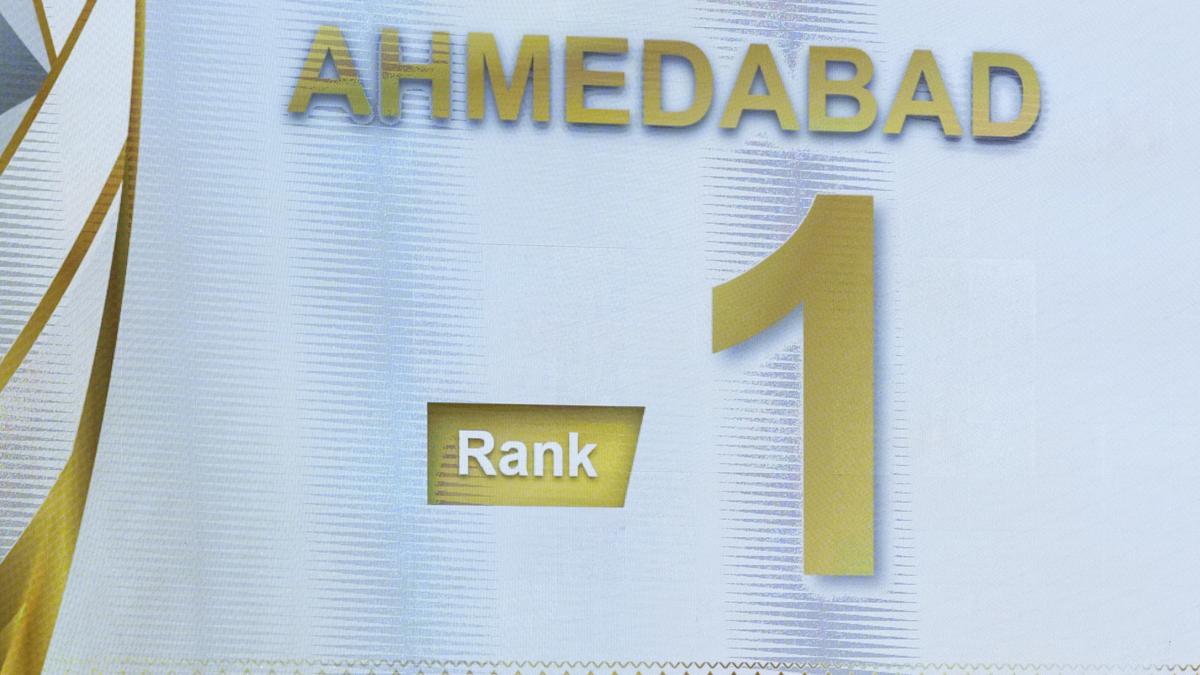Rankings and celebrations apart, the ninth edition of Swachh Survekshan, branded as the world’s largest cleanliness survey, provides policy makers and city managers a reality check on urban sanitation and waste management, and a reliable database. The annual survey steered by Swachh Bharat Mission (SBM)-Urban had not only over 4,500 cities competing, compared to less than 100 in 2016, but was also backed by elaborate assessments and third party verification and further bolstered by feedback from 140 million city dwellers. From segregation, collection, transportation, and management of waste to the welfare of sanitation workers and grievance redressal, the 10 parameters of the survey are comprehensive. The survey has emerged as an effective driver of competition and movement in city sanitation. It also provides a measure of the gaps in India’s journey towards clean cities.
Different population sizes
The advent of Super Swachh League this year was an overdue twist to break the stalemate at the top of the rankings. Indore, Surat, and Navi Mumbai — all mascots of cleanliness for a while — entered this new space along with 20 other cities of different population sizes. Members of the League could create new benchmarks and compete among themselves while yielding space to new aspirants to enter clean city ranks. That is how Ahmedabad, Bhopal, and Lucknow could break into the top as India’s cleanest cities this time in the million-plus category, with another 12 receiving ranks in their own population segments.
Swachh Survekshan 2024-25 appeared focused on faster democratisation of city cleanliness. The expansion of population categories from two to five, starting from cities with a population of less than 20,000 to those with a million-plus population, provided a fairer platform for cities to perform.
Those hitherto lagging are now catching up. Odisha is an example. Bhubaneswar moved up from the 34th to the 9th rank; small towns such as Aska and Chikiti worked their way to the top three clean cities in their categories; and mid-size cities including Rourkela, Cuttack, and Berhampur moved considerably upwards. These trends create hope that cleanliness is not a preserve of only certain States. Cities from the south are yet to make any big mark in the clean city show with Bengaluru being the least inspirational. Hyderabad, Tirupati, Vijayawada, Guntur, and Mysuru were the best in the region. The National Capital Region presents an interesting medley: while the New Delhi Municipal Council areas and Noida ranked best for meticulous sanitation implementation, Delhi, Gurugram, and Ghaziabad improved their ranks irrespective of the negative reports they received in the public domain.
The clean city basket has grown larger since one promising clean city was picked up from each State based on its progress and potential. Once cities are positively stamped, they tend to stay in the aspirational course. Understood this way, the 78 Swachh awards given were not too many.
Setting up the cleanest cities as mentors to the most underperforming ones could help in the proliferation of multiple good practices among urban local bodies (ULBs). While Indore is a veteran in segregating the last gram of waste into six buckets at source — dry, wet, domestic hazardous, plastic, sanitary and e-waste; Surat has been making good revenue by selling sewage-treated water. Pune’s waste management is anchored on cooperatives formed by ragpickers. Visakhapatnam made an eco-park from remediated legacy waste site. Lucknow produced an iconic waste wonder park. The Kuberpur area in Agra, once a toxic dumpsite, transformed to 47 acres of green, by engaging bioremediation and biomining technologies.
Tourist destinations and places of high footfall received special emphasis in the survey. Prayagraj was awarded in the category of Ganga towns, and special recognition was extended to the recent Maha Kumbh for its sanitation management. India accounts for less than 1.5% of international tourist arrivals. Cities need to do much more than an occasional cleanliness drive to enhance tourist experience.
The theme this year
The theme of ‘reduce, reuse, and recycle (RRR)’, advocated by the 2025 survey, carries the prospect of jobs, enterprise, and invigoration of self-help groups. The theme of the last survey was ‘waste to wealth’. We are yet to raise the billions of rupees out of waste that is possible. For this, policy needs to better incentivise investors. Waste-to-energy plants are gaining traction but the private sector may be concerned about commercial viability.
Citizens are yet to take meaningful action even though the RRR approach is entrenched in India’s ancient traditions. While a universal resentment against open defecation has been achieved by SBM, a behaviour change movement fostering intolerance against waste and fighting against consumerism has been tough to initiate.
As more cities get identified as hubs of growth, we must prioritise the management of 1.5 lakh tonnes of solid waste generated every day. A lot will depend on delivery at decentralised levels, especially by ULBs in enforcing segregation, collection, transport, and processing, including of the more challenging plastic and e-waste.
The business of waste management in cities may look chaotic, but it remains possible. The rise of Surat from being a place of garbage three decades ago to the top place in the sanitation chart last year shows that this is a possibility in all cities in India.
Akshay Rout, Former Director General, Swachh Bharat Mission.
Published – July 24, 2025 01:32 am IST

